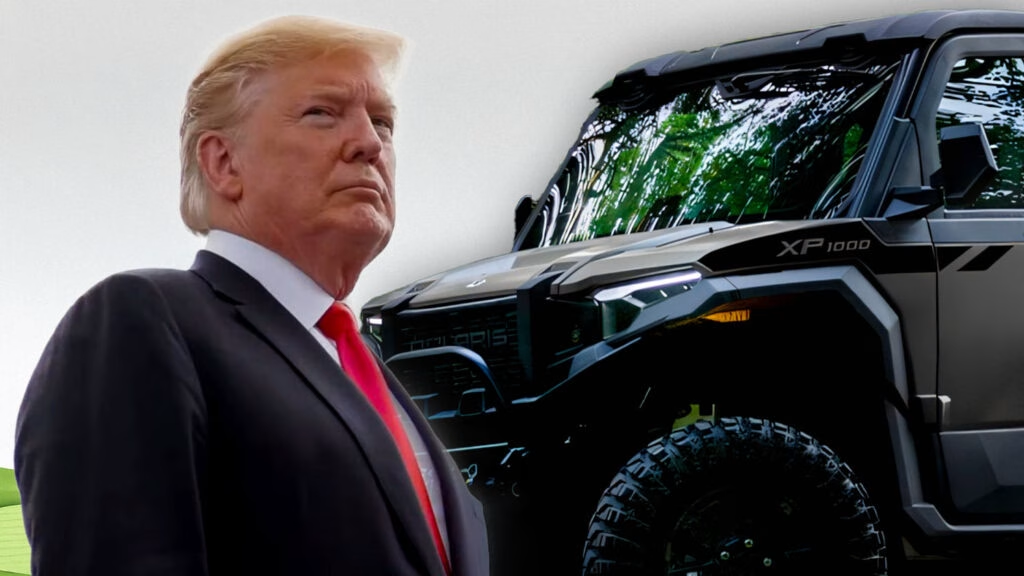Why Did President Trump’s Motorcade Include an Armored Polaris Ranger?
When President Trump visited Scotland for a round of golf at his Turnberry resort, most eyes were on the usual spectacle—security, press, and the president’s signature swing. But this time, something else stole the show: a blacked-out, armored Polaris Ranger XP 1000, quickly dubbed Golf Force One by onlookers. It’s not every day you see a vehicle that looks like it belongs in an action movie quietly rolling alongside a golf course.
So, why the need for such a specialized ride? The answer lies in the evolving nature of presidential security. After a recent attempt on Trump’s life during a golf game in Florida, the Secret Service has doubled down on contingency planning. The armored Polaris isn’t just for show—it’s a rapid-response tool, designed to whisk the president away at a moment’s notice if a threat emerges while he’s out in the open. Think of it as the golf course equivalent of The Beast, but with a lot more mud on the tires.
What Makes Golf Force One Different from a Regular Golf Cart?
Let’s be clear: this isn’t your average country club buggy. The base vehicle, a Polaris Ranger XP 1000, is already a powerhouse in the world of utility side-by-sides, known for its off-road prowess and rugged build. But the version seen in Trump’s motorcade has been taken to a whole new level.
According to the U.S. General Services Administration, a similar armored Polaris—outfitted by Scaletta Moloney Armoring Corp—costs nearly $189,000. That’s more than some luxury sedans. The upgrades likely include ballistic protection, reinforced doors, bullet-resistant glass, and run-flat tires. While the Secret Service keeps the exact specs under wraps, these modifications are standard for vehicles tasked with protecting high-profile individuals.
The result? A vehicle that blends in just enough to avoid drawing attention—until you notice the armor plating and blacked-out windows. It’s built to handle rough terrain, move quickly across a sprawling golf course, and keep its passengers safe from a wide range of threats.
How Does the Secret Service Decide When to Deploy Specialty Vehicles?
The Secret Service is famously tight-lipped about its protective strategies, and for good reason. But experts in presidential security say that every environment presents unique challenges. Open spaces like golf courses are notoriously difficult to secure—there are fewer barriers, more vantage points, and lots of unpredictable movement.
That’s where specialty vehicles like the armored Polaris come in. They allow agents to respond rapidly if something goes wrong, closing the gap between the president and safety in seconds. In most cases, these vehicles remain on standby, ready for emergencies but rarely used for routine transport. In fact, during his recent Scotland visit, Trump opted for a traditional open-air golf cart for his game, leaving Golf Force One parked nearby as a precaution.
What Does This Say About the Evolution of Presidential Security?
The appearance of Golf Force One is more than just a quirky headline—it’s a sign of how presidential security is adapting to new realities. In the past, motorcades relied on armored limousines and SUVs. Now, with threats becoming more unpredictable and public appearances more varied, the toolkit is expanding.
Recent data from the Congressional Research Service highlights a steady increase in threats against public officials, with the Secret Service responding by investing in new technologies and specialized vehicles. The armored Polaris is just one example of this shift. It’s a reminder that even leisure activities like golf require serious planning when you’re responsible for the safety of a former (and possibly future) president.
Are These Measures Effective, or Just for Show?
Skeptics might wonder if such high-profile security measures are more about optics than actual protection. But history suggests otherwise. The failed assassination attempt in Florida underscored the need for rapid, flexible responses in unpredictable settings. Vehicles like Golf Force One are designed to buy precious seconds—the difference between a close call and a tragedy.
Secret Service spokespersons emphasize that their approach is layered: visible deterrents, undercover agents, and specialized equipment all work together. The armored Polaris may look dramatic, but it’s just one piece of a much larger puzzle.
What’s the Real Story Behind the Armored Golf Cart Phenomenon?
Beyond the headlines and social media memes, the story of Golf Force One is really about adaptation. It’s a blend of old-school protection and new-school innovation. The Secret Service isn’t just reacting to threats—they’re anticipating them, thinking several moves ahead.
And while the sight of an armored golf cart might seem over-the-top, it’s a logical response to the unique risks of protecting a high-profile figure in unpredictable environments. As one security analyst put it, “You can’t control where the president wants to go, but you can control how quickly you get him out of harm’s way.”
The big takeaway? Presidential security isn’t about perfection—it’s about smarter adjustments. Start with one change this week, and you’ll likely spot the difference by month’s end.

